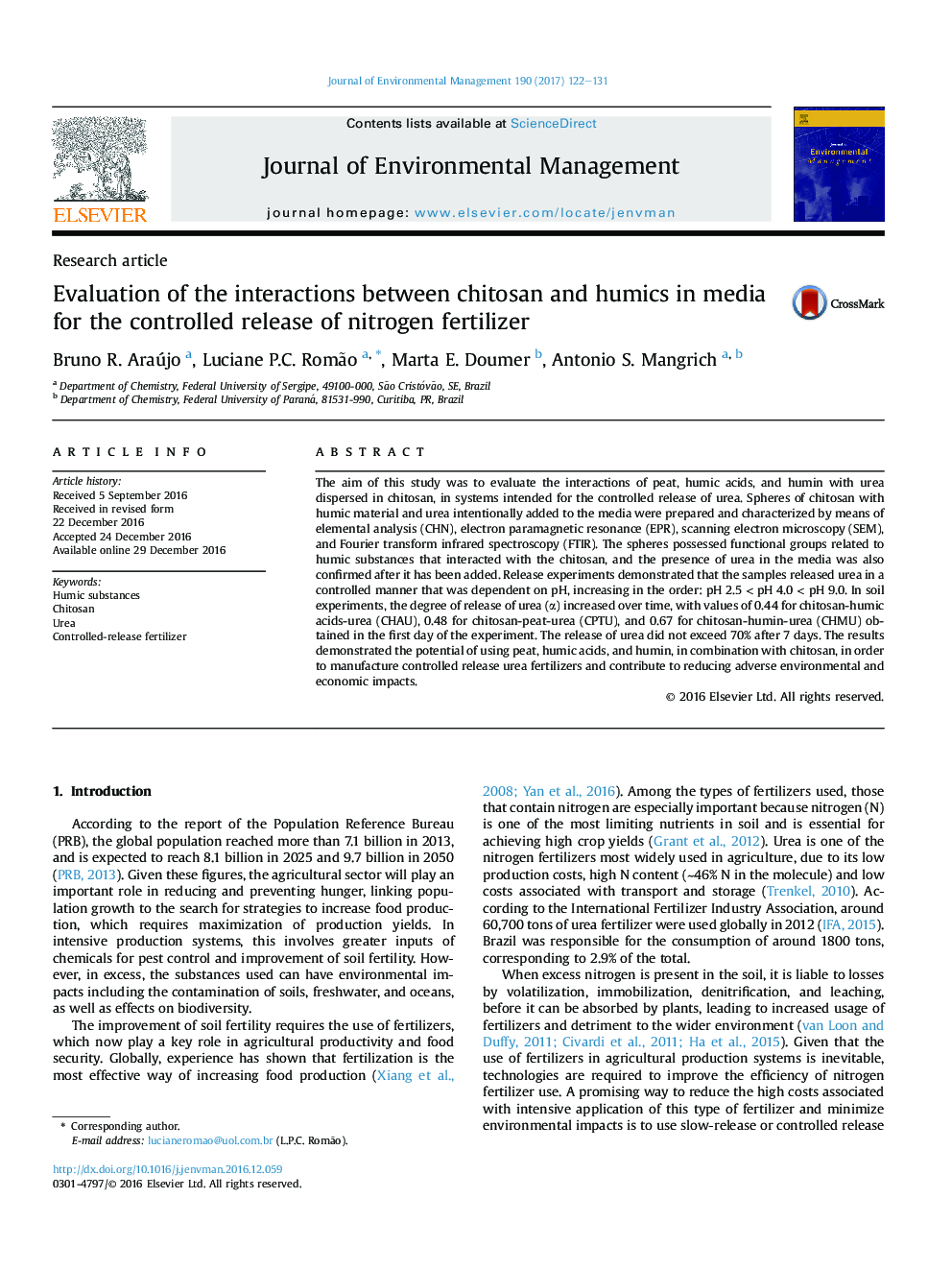| Article ID | Journal | Published Year | Pages | File Type |
|---|---|---|---|---|
| 5116891 | Journal of Environmental Management | 2017 | 10 Pages |
â¢Chitosan and humic substances interact by electrostatic forces between the NH3+ and COOâ groups.â¢Humic substances are able to control the release of urea.â¢Greater control of the release of urea is obtained at higher solution pH.â¢The controlled release mechanism involves deprotonation of carboxylic acids.â¢Chitosan and humic substances are useful for application of urea in soil.
The aim of this study was to evaluate the interactions of peat, humic acids, and humin with urea dispersed in chitosan, in systems intended for the controlled release of urea. Spheres of chitosan with humic material and urea intentionally added to the media were prepared and characterized by means of elemental analysis (CHN), electron paramagnetic resonance (EPR), scanning electron microscopy (SEM), and Fourier transform infrared spectroscopy (FTIR). The spheres possessed functional groups related to humic substances that interacted with the chitosan, and the presence of urea in the media was also confirmed after it has been added. Release experiments demonstrated that the samples released urea in a controlled manner that was dependent on pH, increasing in the order: pH 2.5 < pH 4.0 < pH 9.0. In soil experiments, the degree of release of urea (α) increased over time, with values of 0.44 for chitosan-humic acids-urea (CHAU), 0.48 for chitosan-peat-urea (CPTU), and 0.67 for chitosan-humin-urea (CHMU) obtained in the first day of the experiment. The release of urea did not exceed 70% after 7 days. The results demonstrated the potential of using peat, humic acids, and humin, in combination with chitosan, in order to manufacture controlled release urea fertilizers and contribute to reducing adverse environmental and economic impacts.
